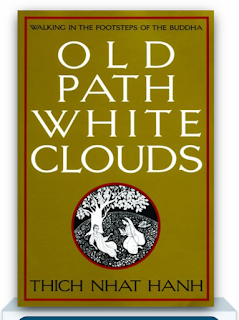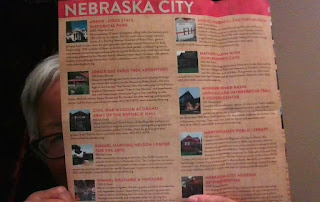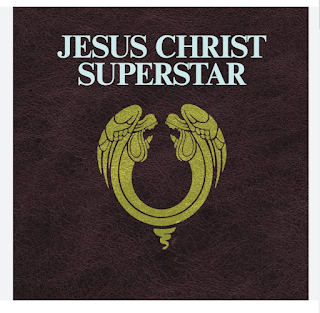Old Path White Clouds, Chapter reviews 1-5
PRACTICING THE WAY--last updated 2023 Oct 8
OLD PATH WHITE CLOUDS
by Thich Nhat Hanh
=====================================
Chapter 1, WALKING JUST TO WALK
In this Chapter we are introduced to Svasti, a 21 year old who has just been ordained as a bikkhu in the Buddha's sangha. The Sangha resides at Bamboo Forest Monastery a 30 minute walk from Rajagaha, the capital of Magadha. The Bamboo Forest Monastery was a gift of King Bimbisara 7 years earlier. There are now 400 monks in the monastery.
Bhikkus of noble birth are mentioned in this chapter: Nanda the Buddha's brother, Devadatta, Anuruddha, and Ananda. Rahula, the 18 year old son of the Buddha is a novice in the community. The Buddha himself is the son of a King.
Svasti (21 yr old) is from a village near Gaya called Uruvela. He has a brother Rupak (18 yo) and two sisters: Bala (16 yo) and Bhima (12 yr old). At 11 years old, Svasti became responsible for his brother and sisters because both parents had died. He earned money by caring for Mr. Rambhul's water buffalo. This is also the age when he first met the Buddha who was passing through Uruvela. At that time, Svasti asked if he could join the Buddha's Sangha and the Buddha promised he would come back for him later when he was of age to join the Sangha, 21.
Sujata, the daughter of the village head, is there along with Svasti's family when he leaves with the Buddha.
Sariputta is the novice master of the monastery and looks after 50 young monks. Kondanna is the abbot. Sariputta resides over the Precepts ceremony that makes Svasti an official member of the sangha.
The Buddha, the Dharma, and the Sangha is the path that Svasti has chosen. The Buddha speaks about the path of awakening as the path of love and understanding.
Characters mentioned in the first chapter:
the Buddha,
Svasti, Rupak, Bala, Bhima
Sujata
King Bimbisara
Sariputta
Kondanna
Nanda, Devadatta, Anuruddha, Ananda
====================================
Chapter 2, TENDING THE WATER BUFFALO
In the first chapter of the book, called Walking Just to Walk, the Buddha has returned to Uruvela where Svasti the Buffalo Boy lives. It has been ten years since they first met in Gaya Forest, and the Buddha has returned as promised to invite Svasti to join his Sangha at Bamboo Forest near Rajagaha the capital of the Maghada kingdon.
In Chapter 2, the Buddha gives a talk and uses the caring and tending of water buffalo as a metaphor for Practicing the Way. The Way is the Buddhist path to freedom from suffering.
In the chapter, we are introduced to another important elder of the Sangha, Ananda. As a consequence of the Buddha's talk, Ananda want to meet Svasti, the buffalo boy who taught the Buddha about the care and tending of water buffalo. Ananda is the Sangha historian or "record keeper". His memory is so good he can recite every word of the Buddha's teachings perfectly after it is given Having committed all of the teachings to memory, he is the person the Bikkhus go to for clarification of the teachings.
The chapter--only seven pages- introduces the reader to many important Buddhist concepts.
- 11 Practices of a Bikkhu
- essential elements of the body
- the Six Sense Organs
- the Four Noble Truths
- the Four Establishments of Mindfulness
- Sixteen Methods of Conscious Breathing
- Sitting Meditation
- Walking Meditation
- arhat
Of the 11 practices of a bhikku, the Buddha says:
"a bhikku who follows these eleven points will attain arhatship in the span of six years of practice"
1 - recognizes each of the essential elements of his body
2 - knows which actions of body, speech, and mind are worth and which are not
3 - cleanses mind and body of desires, attachments, anger, and aversions
4 - watches over the six sense organs--eyes, ears, nose, tongue, body, and mind--so they do not become lost in dispersion
5 - uses the teaching of becoming awake to others how to avoid afflictions of body and mind
6 - avoids paths that lead to desire for fame, wealth, and sexual pleasure (such as taverns and theaters)
7 - cherishes the joy of peace and meditation
8- relies on the Four Noble Truths to negotiate life
9 - knows that the Four Establishments of Mindfulness are the nourishment leading to liberation
10 - is careful to preserve the relationships with nearby communities while begging for food
11 - depends on the wisdom and experience of the elders
The Six Sense Organs is described as: eyes, ears, nose, tongue, body, mind.
Of the Family: Rahula, the Buddha's 18 year old son, and Svasti, the 21 year old newly ordained monk, miss their families and share their feelings about this. The fact that Rahula, Svasti, and the Buddha left their families to study the path of enlightment suggests that the family takes a backseat to this endeavor. Yet the Buddha did not accept Svasti as a Bikkhu at the age of 11 knowing he was the head of his family unit. And, though the Buddha, aka Prince Siddhartha Gautama, left his wife and new born child to seek enlightenment, he knew they would thrive within the environment of the palace. His father was a king.
=====================================
Chapter 3, AN ARMFUL OF KUSA GRASS
This is a flashback to when Svasti meets the Buddha while he is meditating under a tree. Svasti is eleven years old and begins talking with the Buddha. When he says he wishes he could give the Buddha a gift, the Buddha suggests a pile of kusha grass that he can sit on during meditation. The kusha grass is what Svasti feeds the animals with. The Buddha invites Svasti to join him the next day in the forest.
Svasti is an untouchable but the Buddha does not care and lovingly touches Svasti on the head. During this time in India, Untouchables were outside of the Indian caste system, and lived outside the city limits. All Untouchables who touched a person of higher class were beaten. A brahman or a politican/military person touched by an Untouchable was considered "polluted" and had to spend several weeks doing penance. The caste system included the Brahmans (priests and teachers who understood the Vedas), the kshatriya (politicians and military personnel), vaisha (merchants, farmers, and crafts people), and shudra (manual laborers).
Hindu Caste system: This chapter introduces us to the open door policy of Buddhism and its acceptance of any individual regardless of socioeconomic status. It was a major break from the Hindu caste system of the time.
======================================
Chapter 4. THE WOUNDED SWAN
The Buddha
Svasti
Sujatta
Devaddata
princess Sundari the lady in waiting
We continue in the past when Svasti was 11 years old and first met the Buddha in Svasti's hometown of Uruvela.
Svasti continues to care for the water buffalo and then during his lunch break goes to the forest to offer his rice ball to the Buddha. There he meets Sujata-- 12 or 13 yr old-- the daughter of the village chief.
The Buddha and Svasti share the fragrant white rice that Sujatta brought the Buddha, and the coarse brown rice that Svasti brought. They all drink water that Sujatta brought, all from the same cup. Sujatta does not become tainted after drinking from the same cup of Svasti, the Untouchable. The Buddha entreats Sugatta to taste the brown rice that Svasti has brought. He continues to eschew the caste system of the land.
"Everyone's tears are salty, and everyone's blood is red. It is wrong to divide people by castes and create division and prejudice among them. This has become very clear to me during my meditation."
THE THREE EAT IN SILENCE: "These grains of rice are so precious I like to eat in silence so I can appreciate them fully," says the Buddha.
====
When they are done with their meal, the Buddha tells a story of a swan he saves after it is shot down by his cousin Devadatta with an arrow.
The Buddha is 9 years old and Devadatta is 8. Devaddata claims the swan belongs to him since he shot it out of the air. The two boys take their argument to the village elders who appear to side with Devadatta but are subtly redirected by the King's clearing of his throat. They vote in favor of the king's son. King Suddodhana of Kapilavattu, is the Buddha's father.
=====
Devaddata's argument: "When this bird was flying in the sky, it didn't belong to anyone. As I'm the one who shot it out of the sky, it rightfully belongs to me. "
the young Buddha's argument: "Those who love each other live together and those who are enemies live apart. The bird cannot live with you. I saved her, bandaged her wound, warmed her, and was on my way to find food for her when you arrived. The bird and I love each other and we can live together. The bird needs me not you."
=====
"In this world, few people look with the eyes of compassion and so we are cruel and merciless toward each other. The weak are always oppressed by the strong. I still see that my reasoning that day was correct for it arose from love and understanding. Love and understanding can ease the suffering of all beings. The truth is the truth whether or not it is accepted by the majority. Therefore, I tell you children. It takes great courage to stand up for and protect what is right. "
The story of The Wounded Swan is about fighting for the weak and wounded against those who are strong and oppressive, cruel and merciless. The Buddha states that Love and Understanding can ease the suffering of all beings. [the Buddha refers to "beings" rather than just "human beings." This is a possible distinction from Christianity.]
There is also the issue that most people would side with the erroneous logic of cousin Devadatta. But the Buddha states that Truth is not a voting match such that the majority can declare what is true or not based on opinion alone. Were it not for the fact he was the king's son, the young Siddhartha would have lost the swan to Devadatta.
Of note, Svasti was more than a meticulous tender of five water buffalo; he also provided the kusha grass for the Buddha to sit on while he was meditating.
==============================================
Chapter 5: A BOWL OF MILK
This chapter tells the story of how Sujata, the 12 year old daughter of the chief of Uruvela village, met the Buddha. At the time that the young Siddhartha was learning many meditation methods, he practiced one involving severe austerities, depriving the body of food and drink in order to go deeper into a mental state of clarity.
He had starved himself and fallen into unconsciousness from weakness on a road near Uruvela. Young Sujata found him and revives the mountain ascetic with a bowl of milk. She somehow understood that this monk was important and that offering food to him was more beneficial than making a dozen offerings to the forest gods which is why she was in the forest to begin with. She knew that if this monk's meditation deepened, his increased love and understanding could help relieve much suffering in the world.
As Siddhartha begins to get his health back, he reveals his former life to Sujata, explaining that his father is the king of the Sakya kingdom. He also tells her of his decision to no longer starve himself.
"I have seen that abusing the body cannot help one to find peace and understanding. The body is not just an instrument. It is the temple of the spirit, the raft by which we cross to the other shore. I will no longer practice self-mortification. I will go into the village each morning to beg for food."
In this chapter we are introduced to many Indian names: Svasti, Sujata, Pruna, Rada, Bhima, Balagupta, Vijayasena, Ulluvillike. Jatalika, Nandabala, Nalaka, Rupak, Bala, Bhima, Gavampati, Mr. Rambhul. We also are introduced to foods Sujata brought to the Buddha which included: rice, chappatis, milk, congee, curry, peanuts, and sesame salt.
=================================
Chapter 6: BENEATH A ROSE-APPLE TREE
This chapter describes the birth of Siddhartha Gautama--the Buddha. It also describes what he was like at the age of 9 years old.
King Sudodhana and Queen Mahayama were the Buddha's parents. Queen Mahayama died shortly after Siddhartha was born, and his aunt Mahapajapati (aka Gotami) raised him as the new queen. From then on, she is referred to as Siddhartha's mother although she was not the one who gave birth to him.
According to legend, Queen Mahayama had a dream before his birth that she encountered a white 6 tusked elephant who came from the heavens. This elephant left a pink lotus flower within her. The king summoned holy men of the kingdom to interpret this dream, and they said that the king was going to have a very special son, one who would become a great Emperor, or a great Teacher, who will show the way of Truth to all beings in Heaven and Earth.
As the queen was indeed with child she headed toward her parents home in Ramagama in the kingdom of Koliya to give birth and ended up having the child en route under an ashok tree in the Garden of Lumbini. The King named the new prince Siddhartha, meaning, one who accomplishes his aim.
One week after the birth a holy man named Asita Kaladevala visited the child in his family's palace and proclaimed that he was going to be a Master of the Way. All of heaven and earth would be his home, and all beings his relation. The King was depondent that he would not become a great ruler but rather a great holy man/monk.
The young Siddhartha was an excellent student and studied literature, writing, music, and athletics along with cousins, Devadatta and Kimbila and a friend Kaludayi. Their teacher was called Vishvamitra.
At the First Plowing of the Fields festival: Siddhartha attends with his cousins to this huge celebration and gets impatient with the long ritual employed of reading from the Hindu holy scriptures, called the Vedas. Siddhartha goes and plays with his friends while the Brahmans chant and say the prayers. Queen Mahapajapati explains to him that his father cannot read from the Vedas, they can only be read by the Brahmans.
As the day progresses Siddhartha becomes overheated and goes and rests under a rose-apple tree. He observes many activities and notes the suffering of the water buffalo as they pull the plows, the worms being cut in half by the plow, and the birds swooping down to gather the worms. He is reflective and is compelled to assume a sitting posture and begin meditating. His mother Queen Gatami notices this. Siddhartha opens his eyes and says, "Mother, reciting the scriptures does nothing to help the worms and the birds."
Siddhartha invites some poor children who are watching the festival to join him.
---
We note that this book is written by Thich Nhat Hahn, and he is presenting this story of the Buddha's birth which took place long before paper and pencil existed. The details are therefore as fictionalized as the story of Jesus' birth. However, these details are the creation of devout scholar of the Buddha's life.
From his birth, the Buddha's life appears to have been especially blessed and supernatural. There is a fortuitous dream, and the comments of holy men/soothsayers. He is an excellent student, and an introspective youngster. At the age of nine, he is already questioning the traditions of his Hindu faith.
It is revealed early on that the Buddha is the savior of all beings, not just human beings. In this context the Buddha at the age of 9 is concerned for the welfare of the birds, the water buffalo, and the worms in the ground. The Hindu pantheon of gods and spirits refer to many non-human beings. The very term, HUMAN BEING, suggests that there are many other types of beings, wherein "human" is merely an adjective.
=====
Chapter 7: WHITE ELEPHANT PRIZE




Comments
Post a Comment